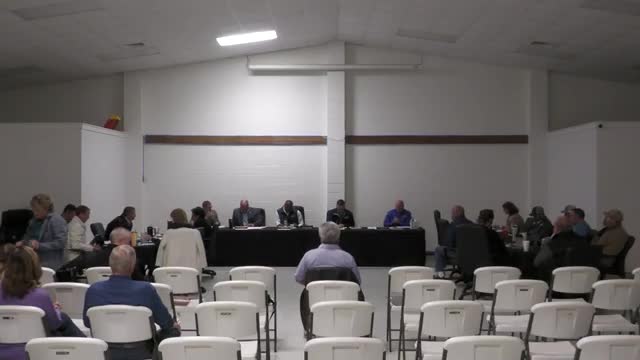Local leaders explore living shoreline project to boost fish habitats and water quality
January 18, 2025 | Gulf County, Florida
This article was created by AI summarizing key points discussed. AI makes mistakes, so for full details and context, please refer to the video of the full meeting. Please report any errors so we can fix them. Report an error »

The Gulf County Board of County Commissioners (GCBOCC) workshop held on January 15, 2025, focused on the potential implementation of a living shoreline project aimed at enhancing local marine habitats and water quality. The discussion was initiated by a board member who highlighted recent conversations regarding the benefits of living shorelines, which are designed to create natural structures that provide habitats for fish and other marine life.
The board member explained that while the living shoreline may not fully protect against severe weather events, such as the washout caused by Hurricane Michael, it offers some level of protection and ecological benefits. Drawing comparisons to a successful project in Franklin County, the member noted that similar initiatives have led to increased fish populations and improved wildlife habitats.
The conversation emphasized the importance of community involvement, as property owner permissions would be necessary to proceed with the project. The board member expressed a desire to gauge the support of fellow commissioners before moving forward with grant applications for funding, which would cover the costs of the project.
Additionally, the member mentioned that the Florida State University (FSU) branch could assist with preliminary testing, including core sampling to assess the suitability of the proposed locations for the living shoreline. The testing would be conducted at no cost, providing a valuable opportunity to gather data before committing to the project.
The discussion also touched on the need for restoration efforts in areas where seagrass has diminished, indicating that the living shoreline could play a role in revitalizing local ecosystems. The board member concluded by reiterating the potential benefits of replicating successful strategies from neighboring counties, emphasizing the importance of collaboration and research in moving the project forward.
Overall, the workshop underscored a proactive approach to environmental stewardship in Gulf County, with plans to explore innovative solutions for enhancing coastal resilience and marine biodiversity. The next steps involve engaging with property owners and conducting necessary assessments to determine the feasibility of the living shoreline project.
The board member explained that while the living shoreline may not fully protect against severe weather events, such as the washout caused by Hurricane Michael, it offers some level of protection and ecological benefits. Drawing comparisons to a successful project in Franklin County, the member noted that similar initiatives have led to increased fish populations and improved wildlife habitats.
The conversation emphasized the importance of community involvement, as property owner permissions would be necessary to proceed with the project. The board member expressed a desire to gauge the support of fellow commissioners before moving forward with grant applications for funding, which would cover the costs of the project.
Additionally, the member mentioned that the Florida State University (FSU) branch could assist with preliminary testing, including core sampling to assess the suitability of the proposed locations for the living shoreline. The testing would be conducted at no cost, providing a valuable opportunity to gather data before committing to the project.
The discussion also touched on the need for restoration efforts in areas where seagrass has diminished, indicating that the living shoreline could play a role in revitalizing local ecosystems. The board member concluded by reiterating the potential benefits of replicating successful strategies from neighboring counties, emphasizing the importance of collaboration and research in moving the project forward.
Overall, the workshop underscored a proactive approach to environmental stewardship in Gulf County, with plans to explore innovative solutions for enhancing coastal resilience and marine biodiversity. The next steps involve engaging with property owners and conducting necessary assessments to determine the feasibility of the living shoreline project.
View full meeting
This article is based on a recent meeting—watch the full video and explore the complete transcript for deeper insights into the discussion.
View full meeting